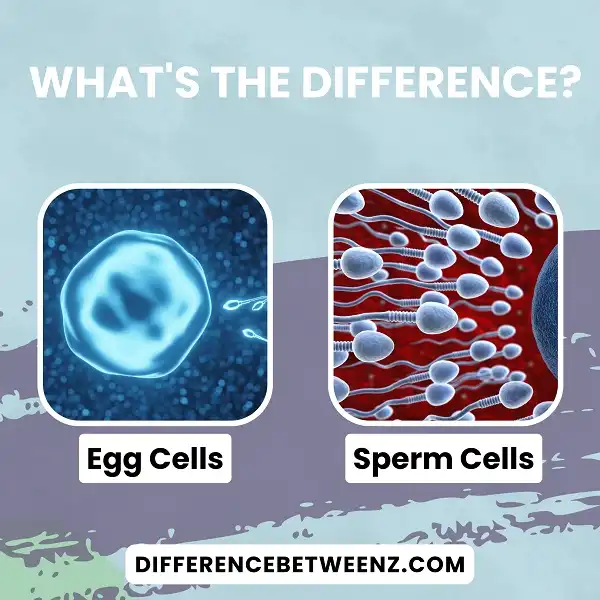When most people think about the process of creating a new life, they think about a sperm cell and an egg cell. These two cells are both essential for conception, but they have different functions. In this article, we will discuss the differences between egg cells and sperm cells. We will also explore how these cells work together to create a new life.
What are Egg Cells?
Egg cells are the female gametes in most animals, including humans. Egg cells are typically large in comparison to other cells in the body, and they contain a high amount of cytoplasm. This allows for the development of a large number of organelles, which is necessary for cell division. Egg cells also have a thick outer membrane, known as the zona pellucida. This helps to protect the egg cell during fertilization and development.
In humans, egg cells are produced in the ovaries. Each month, one of the ovaries releases an egg cell, which travels down the fallopian tube towards the uterus. If fertilization occurs, the egg cell will implant itself in the lining of the uterus and begin to develop into a fetus. If no fertilization occurs, the egg cell will be shed along with the lining of the uterus during menstruation. Egg cells are essential for reproduction, and they play a vital role in the development of new life.
What are Sperm Cells?
Sperm cells are the male gametes in animals and plants; they fuse with female gametes (ova) during fertilization to form zygotes that develop into offspring that inherit a selection of the traits of each parent. Sperm cells are produced in the testicles of males and need to be protected from high temperatures outside the body.
- Most sperm cells die before they reach the egg; human sperm survive for only about 48 hours after ejaculation, though some have been known to survive for up to five days in the female reproductive tract. Sperm cells are very small, only about one-fifth of a millimeter long.
- They have a head that contains chromatin (DNA packaged with proteins), a midpiece that contains mitochondria ( organelles that produce energy), and a tail that helps them move through the fluid.
- Sperm cells are motile, meaning they can move on their own. They travel from the testicles through the vas deferens (a duct or tube) to the urethra (another duct or tube) and out of the penis during ejaculation. Sperm cells are required for sexual reproduction; they are not able to divide on their own and must rely on female gametes for reproduction.
Sperm cells are produced in large numbers because only a small percentage of them will go on to fertilize an egg. The average ejaculation contains about 300 million sperm cells. Human males produce about 1,500 sperm cells per second.
Difference between Egg Cells and Sperm Cells
- Egg cells and sperm cells are the two types of gametes in animals. Egg cells are produced by females while sperm cells are produced by males. An egg cell is usually large in size and contains a lot of stored nutrients while a sperm cell is small in size and contains only a small amount of nutrients.
- Egg cells are not motile while sperm cells are motile. This means that the female needs to be fertilized by the male in order for fertilization to occur. The difference in size and mobility between egg cells and sperm cells is due to the fact that the egg cell needs to be protected and nourished until it is ready to be fertilized while the sperm cell only needs to reach the egg cell in order to fertilize it.
- Egg cells have a nucleus that contains the chromosomes that carry the genetic information while sperm cells do not have a nucleus. This difference is due to the fact that the egg cell will give rise to a new individual while the sperm cell only provides half of the genetic material needed for fertilization.
Conclusion
Egg cells and sperm cells are both essential for reproduction, but they have some key differences. Egg cells are larger and contain more cytoplasm than sperm cells. Sperm cells are smaller and have a higher concentration of DNA. Egg cells also produce estrogen, while sperm cells produce testosterone. These hormones play an important role in the development of reproductive organs and other physiological processes. Thanks for reading!


